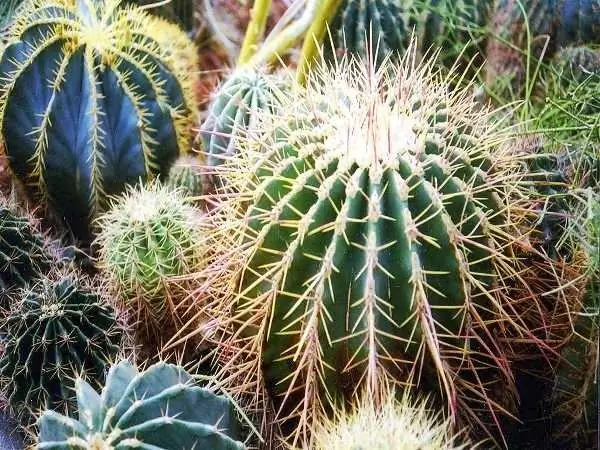- Author Nora Macey [email protected].
- Public 2023-12-16 10:17.
- Last modified 2025-01-23 08:48.
The cactus is one of the few plants that can survive in the driest climates. The cactus stores water in its thick stem. In order for the life-giving moisture to be consumed more slowly, the thorny plant had to abandon the leaves.

According to legend, a rose once celebrated its birthday. Various plants were invited to the holiday, among which there was also a cactus. The prickly friend had no gift, so he gave the rose his needles. And the rose, in turn, thanked the cactus with a beautiful bud, which blooms once a year, on his birthday.
What are thorns
In most sources, you can find the theory that the spines of a cactus are modified leaves. Chlorophyll, which is found inside the spines at a certain stage of their development, serves as evidence. But it is still more correct to assume that the thorns are modified renal scales.
When talking about cacti, most people imagine something prickly and spicy. Meanwhile, in nature there is such a variety of species of this plant that you can find specimens with spines in the form of wire, hair, feathers, soft bristles and paper ribbons.
What are thorns for?
Thorns are a survival tool for the cactus. First, they have a protective function. Large sharp needles scare away herbivores. Spines in the form of thin and short hairs dig into the skin for a long time, discouraging any desire to touch the plant again. However, protecting thorns is not just about defense. For example, the Mammillaria plumosa cactus is covered with white feathers. It does not need protection as it grows high in the mountains. Feathers protect the plant from overheating, forming a kind of umbrella over it. And on cold nights, they serve as a fur coat for a cactus.
In especially arid regions, where rains have to wait for several months, the thorns serve as a store of moisture. They are able to absorb water from the air, keeping it inside. This is confirmed by experience: if you remove the cactus from the soil and place it on a dry napkin, the plant will continue to grow, consuming internal moisture reserves. Static tension attracts the smallest particles of water that are contained in morning fog or dew. A drop of water forms at the end of the thorn, which is absorbed by the plant. If the “storage” in the needle is full, the water flows down the stem to the roots of the cactus in thin streams.
Some types of cacti continue their genus with the help of thorns. For example, Cylindoropuntia has many processes covered with tenacious spines. With them, the plant clings to the wool of approaching animals, which, in turn, transfer shoots to other areas. There are also species in which "hooks" are located on seeds and fruits. And there are specimens that have nectar-bearing spines. This is how the plant attracts pollinators.






